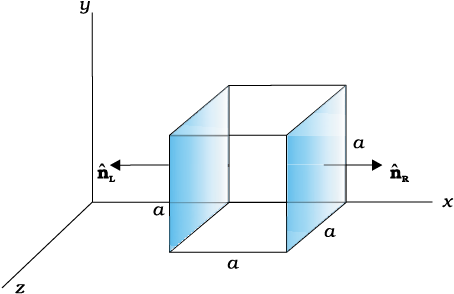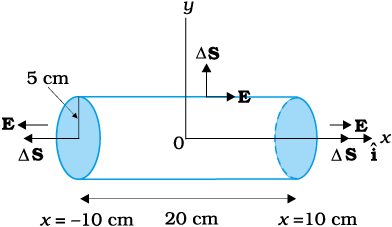An electron falls through a distance of \(1.5~\text{cm}\) in a uniform electric field of magnitude \(2\times10^4~\text{N/C}\) [figure (a)]. The direction of the field is reversed keeping its magnitude unchanged and a proton falls through the same distance [figure (b)]. If \(t_e\) and \(t_p\) are the time of fall for electron and proton respectively, then:

1. \(t_e=t_p\)
2. \(t_e>t_p\)
3. \(t_e<t_p\)
4. none of these

1. \(t_e=t_p\)
2. \(t_e>t_p\)
3. \(t_e<t_p\)
4. none of these
Two-point charges and , of magnitude and , respectively, are placed 0.1 m apart. The electric field at point A (as shown in the figure) is:
Two charges \(\pm10~\mu\text{C}\) are placed \(5.0\) mm apart. The electric field at a point \(P\) on the axis of the dipole \(15\) cm away from its centre \(O\) on the side of the positive charge, as shown in the figure is:
| 1. | \(2.7\times10^5~\text{NC}^{-1}\) |
2. | \(4.13\times10^6~\text{NC}^{-1}\) |
| 3. | \(3.86\times10^6~\text{NC}^{-1}\) | 4. | \(1.33\times10^5~\text{NC}^{-1}\) |
Two charges \(\pm 10~ \mu \text{C}\) are placed \(5.0\) mm apart. The electric field at a point \(Q\), \(15\) cm away from \(O\) on a line passing through \(O\) and normal to the axis of the dipole, as shown in the figure is:
1. \(2.8 \times 10^5~\text{NC}^{-1}\)
2. \(3.9\times 10^5 ~\text{NC}^{-1}\)
3. \(1.33\times 10^5 ~\text{NC}^{-1}\)
4. \(4.1\times 10^6 ~\text{NC}^{-1}\)
The electric field components in the shown figure are , Ey = Ez = 0, in which . The net flux through the cube is: (Assume that a = 0.1 m)

The electric field components in the shown figure are , Ey = Ez = 0, in which . Find the charge within the cube if net flux through the cube is : (Assume that a = 0.1 m).

An electric field is uniform, and in the positive \(x\)-direction for positive \(x\), and uniform with the same magnitude but in the negative \(x\)-direction for negative \(x\). It is given that \(\vec{E}=200\hat{i}\) N/C for \(x>0\) and \(\vec{E}=-200\hat{i}\) N/C for \(x<0\). A right circular cylinder of length \(20~\text{cm}\) and radius \(5~\text{cm}\) has its centre at the origin and its axis along the \(x\text{-}\)axis so that one face is at \(x= + 10~\text{cm}\) and the other is at \(x= -10~\text{cm}\) (as shown in the figure). What is the net outward flux through the cylinder?
1. \(0\)
2. \(1.57~\text{Nm}^2\text{C}^{-1}\)
3. \(3.14~\text{Nm}^2\text{C}^{-1}\)
4. \(2.47~\text{Nm}^2\text{C}^{-1}\)
An electric field is uniform, and in the positive x-direction for positive x, and uniform with the same magnitude but in the negative x-direction for negative x. It is given that E = N/C for x > 0 and E = – N/C for x < 0. A right circular cylinder of length 20 cm and radius 5 cm has its centre at the origin and its axis along the x-axis so that one face is at x = +10 cm and the other is along the x-axis so that one face is at x = +10 cm and the other is at x = –10 cm (as shown in the figure). What is the net charge inside the cylinder?

1. \(\dfrac{Z e}{4 \pi \varepsilon_{0}} \left(\dfrac{1}{r^{2}} - \dfrac{r}{R^{3}}\right)\)
2. \( \dfrac{Z e}{4 \pi \varepsilon_{0}} \dfrac{1}{R^{2}}\)
3. \( \dfrac{Z e}{4 \pi \varepsilon_{0}} \dfrac{1}{r^{2}}\)
4. \( \dfrac{Z e}{4 \pi \varepsilon_{0}} \dfrac{r}{R^{3}}\)
An early model for an atom considered it to have a positively charged point nucleus of charge Ze, surrounded by a uniform density of negative charge up to a radius R. The atom as a whole is neutral. For this model, the electric field at a distance r (r>R) from the nucleus is:









